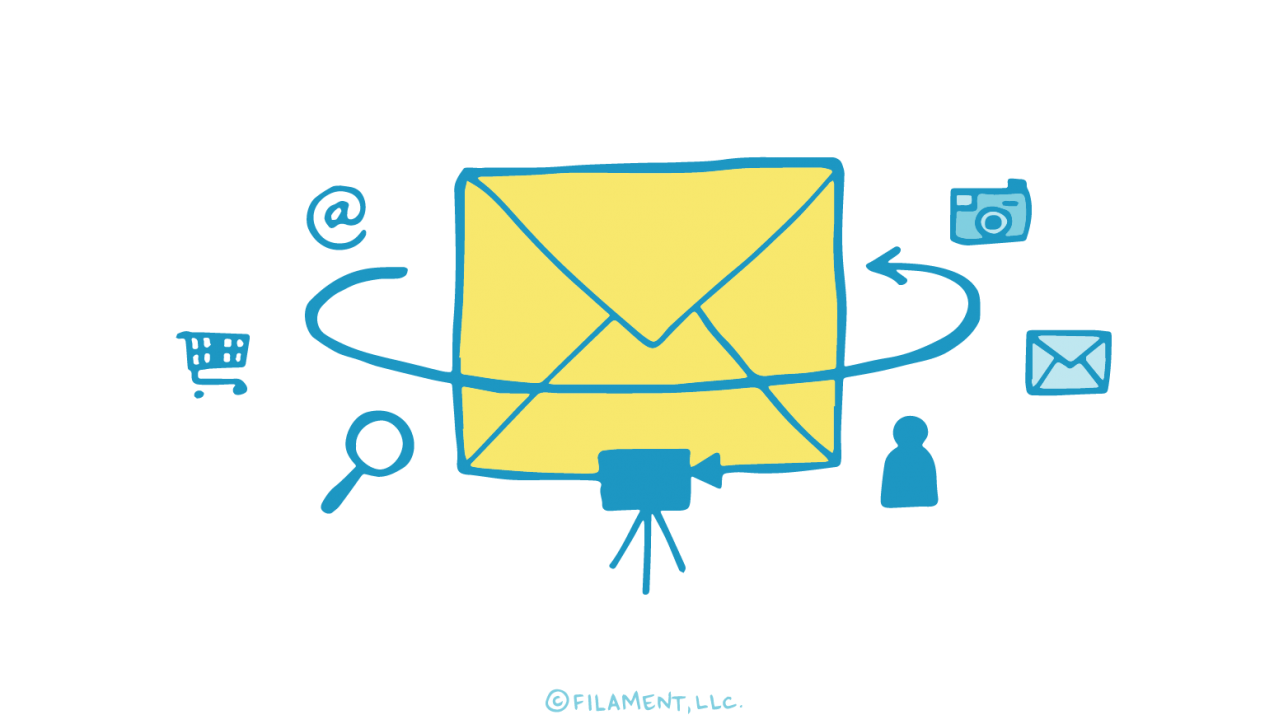To keep your email marketing on point, you’ll want to integrate your email campaigns with your other inbound marketing channels. On Monday, we posted the eight steps to build an integrated campaign. This post will offer email-specific suggestions (with examples) within that framework.
Audience
In order to allow integration to work its magic, you need to know your audience in and out. You’ll want to get the answers to questions like: What resonates most with our subscribers? What devices do they use to view our emails? What websites do they frequent? What social media sites do our subscribers hang out on most? Do they like videos? Webinars? Podcasts? Or do the prefer a simple text email?
Luckily, thanks to your email analytics (more on that below), you have data you can use, data that tells you things about your subscribers’ interests and behaviors. For example, open rates and click through data can tell you what kinds of content your subscribers like best. You can also survey your subscribers and ask them directly. However, the most effective way to find out your subscribers’ needs and wants is to look at their behavior.
Strategy
Once you know your audience thoroughly, you’ll know what channels to integrate your email marketing with and what kinds of content will engage your subscribers. You can use that information to devise an integrated strategy.
For example, you might integrate email and social media by adding social sharing buttons to you emails, like this example from Apartment Therapy. We like how they have their social-sharing buttons at the top of the email versus the bottom like most brands do.
Subject Line: Need to Find Some Extra Money this Month? 8 Things You Can Stop Buying Today

You can also build your email list using social media by putting a “sign up” call-to-action right on your Facebook page, like HubSpot in the example below. This is a great way to turn social media followers into subscribers.

You can send and segment emails based on social media insights. For example, using your analytics, you can see a list of email subscribers and leads who have mentioned your company on Twitter. You can then follow up with an email that features targeted information.
Last but not least, if your subscribers use mobile devices, make sure your integrated marketing strategy is mobile. Why? According to Litmus, 69% of mobile users delete emails that aren’t optimized for mobile devices. Here are a few tips for making your emails mobile:
- Make sure your buttons and links are easy to tap.
- Offer plain text and HTML versions of your emails.
- Include descriptive alt text for your images in case they don’t display.
- Test your emails to see how they look on different mobile devices.
- Optimize the landing pages and forms your emails link to, ensuring they’re easy to view and fill out on the mobile devices your subscribers are using.
For example, if one were to click on HubSpot’s CTA in the example above while using an iPad, we’d be driven to a landing page that allows us plenty of room to complete the form.

Identity
From email to social media to your blog, make sure you’re presenting a unified identity visually and through your brand voice. When your subscribers click on a link in your email, be sure they’re going to a landing page that’s optimized for them and has the same consistent look and feel as your email. Check out the landing page for the Apartment Therapy email from earlier in this post. You’ll see that it has the same look and feel as the email, with the same logo, main image, fonts and link colors. And the article’s title is identical to the email’s subject line.

Create clear, compelling and consistent content that your audience wants and make it repurposeable for different channels. For example, let’s say your audience loves how-to info. You can create a how-to video that you introduce in an email and that lives on your website. You can also feature that video in a blog post and in a social media post. You could also covert your video into an animated gif for email and twitter. Use the same keywords and phrases across channels throughout your campaign.
Teamwork
If you have many different teams working on your digital marketing, be sure to bring them together on a regular basis to keep everyone on the same page about your brand identity and your ultimate purpose. When teams come together, share their talents, and communicate well to maintain consistency, it tends to build enthusiasm and confidence for your campaigns.
Tracking
If your marketing is integrated, your analytics need to be integrated as well. Otherwise, you won’t be getting the full picture of how your subscribers are navigating their experience with you. Omni-channel analytics lets you grab deeper insights into what your target audience wants from your business and allows for better segmentation. Software companies like HubSpot and Beckon build integrated marketing right into their services.
Check back with us in a couple weeks as we delve deeper into some of these topics, helping you move toward implementing data-driven & customer-oriented integrated email marketing.
Need some help developing an integrated marketing plan for your business? Let Filament light the way.


